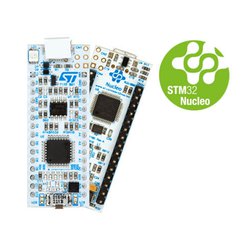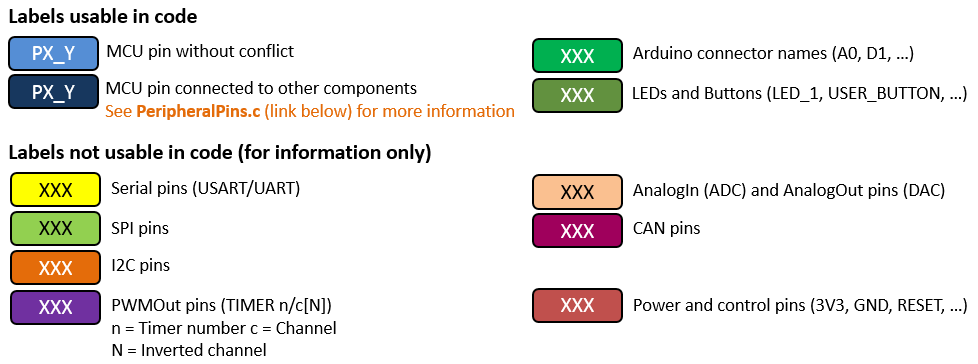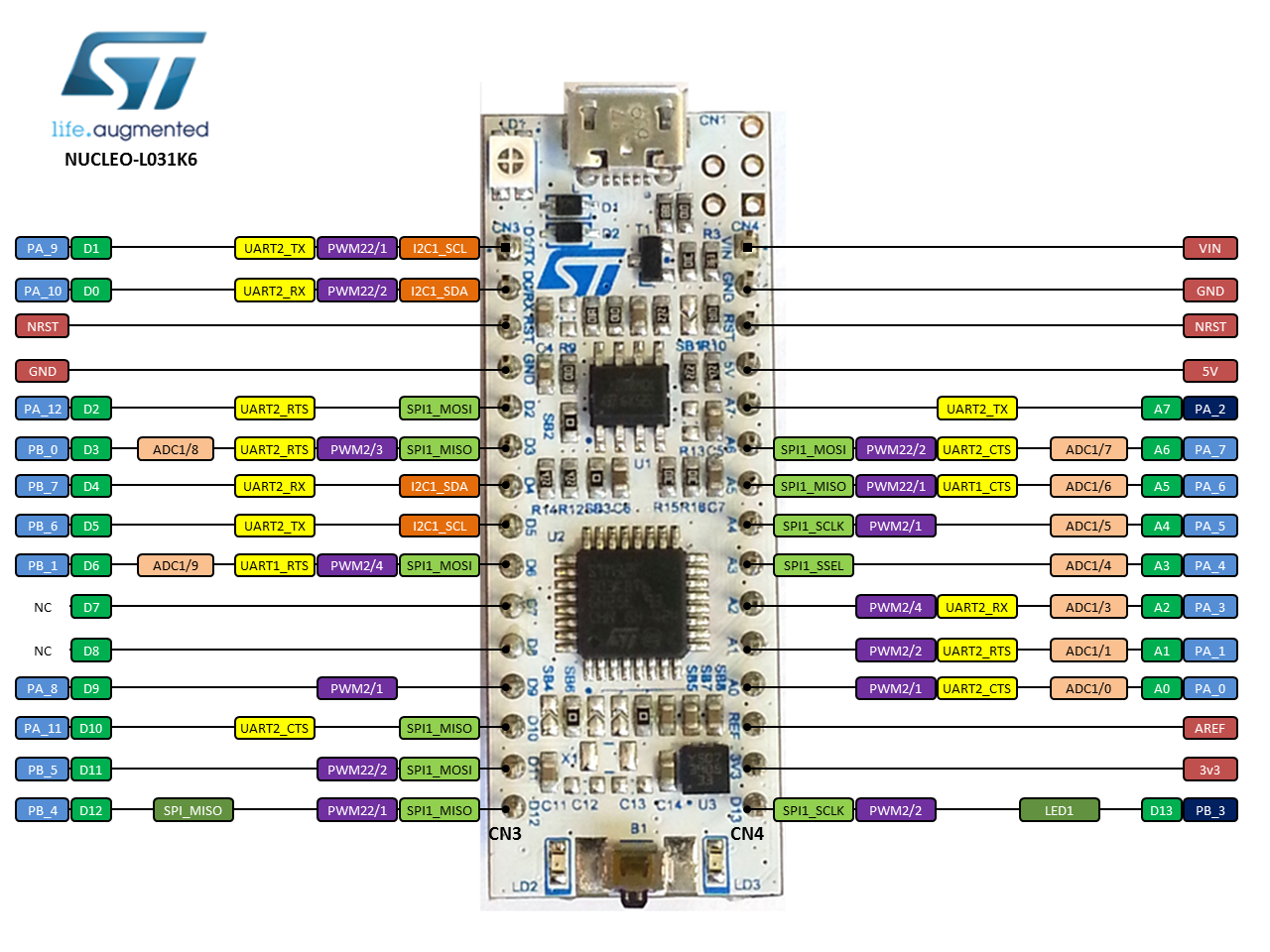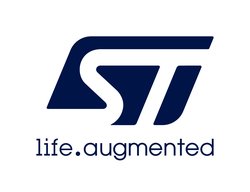NUCLEO-L031K6
Affordable and flexible platform to ease prototyping using a STM32L031K6T6 microcontroller.

Overview¶
The STM32 Nucleo board provides an affordable and flexible way for users to try out new ideas and build prototypes with any STM32 microcontroller line, choosing from the various combinations of performance, power consumption and features.
The Arduino™ connectivity support and ST Morpho headers make it easy to expand the functionality of the STM32 Nucleo open development platform with a wide choice of specialized shields.
The STM32 Nucleo board does not require any separate probe as it integrates the ST-LINK/V2-1 debugger/programmer.
Microcontroller features¶
- STM32L031K6T6 in LQFP32 package
- ARM®32-bit Cortex®-M0+ CPU
- 32 MHz max CPU frequency
- VDD from 1.65 V to 3.6 V
- 32 KB Flash
- 8 KB SRAM
- Timers General Purpose (6)
- SPI/I2S (1)
- I2C (1)
- USART (1)
- 12-bit ADC with 10 channels (1)
- GPIO (20) with external interrupt capability
- RTC
Nucleo features¶
- Extension with Arduino™ nano connectivity
- On-board ST-LINK/V2-1 debugger/programmer with SWD connector:
- USB VBUS
- External source
- Three LEDs:
- USB communication (LD1), power LED (LD2), user LED (LD3)
- Reset push-button
Board pinout¶
Pins Legend¶

You can find more details on the available pins and labels in the following files (link to the latest mbed-dev library version):
Arduino-Nano-compatible headers¶

Information
By default the PA_5 (A4) and PA_6 (A5) pins can only be used as Input floating (ADC function). Remove SB16 and SB18 solder bridges in order to use these pins as Digital output and have access to other functions (DigitalOut, SPI, PWM, etc...). Refer to the user manual for more details.
Supported Shields¶
Gravitech 7 Segment Display for Arduino Nano
Nucleo ST-LINK/V2 driver installation and firmware upgrade
Technical references¶
For more information, please refer to:
Known limitations¶
The following section describes known limitations of the platform. Note that general issues are tracked into the mbed repository available on GitHub.
- ARM mbed RTOS not compatible with this platform (code size is too big).
Tips and Tricks¶
Find more information in ST WIKI pages.
You need to log in to post a discussion
Questions
9 years, 3 months ago
9 years, 4 months ago

